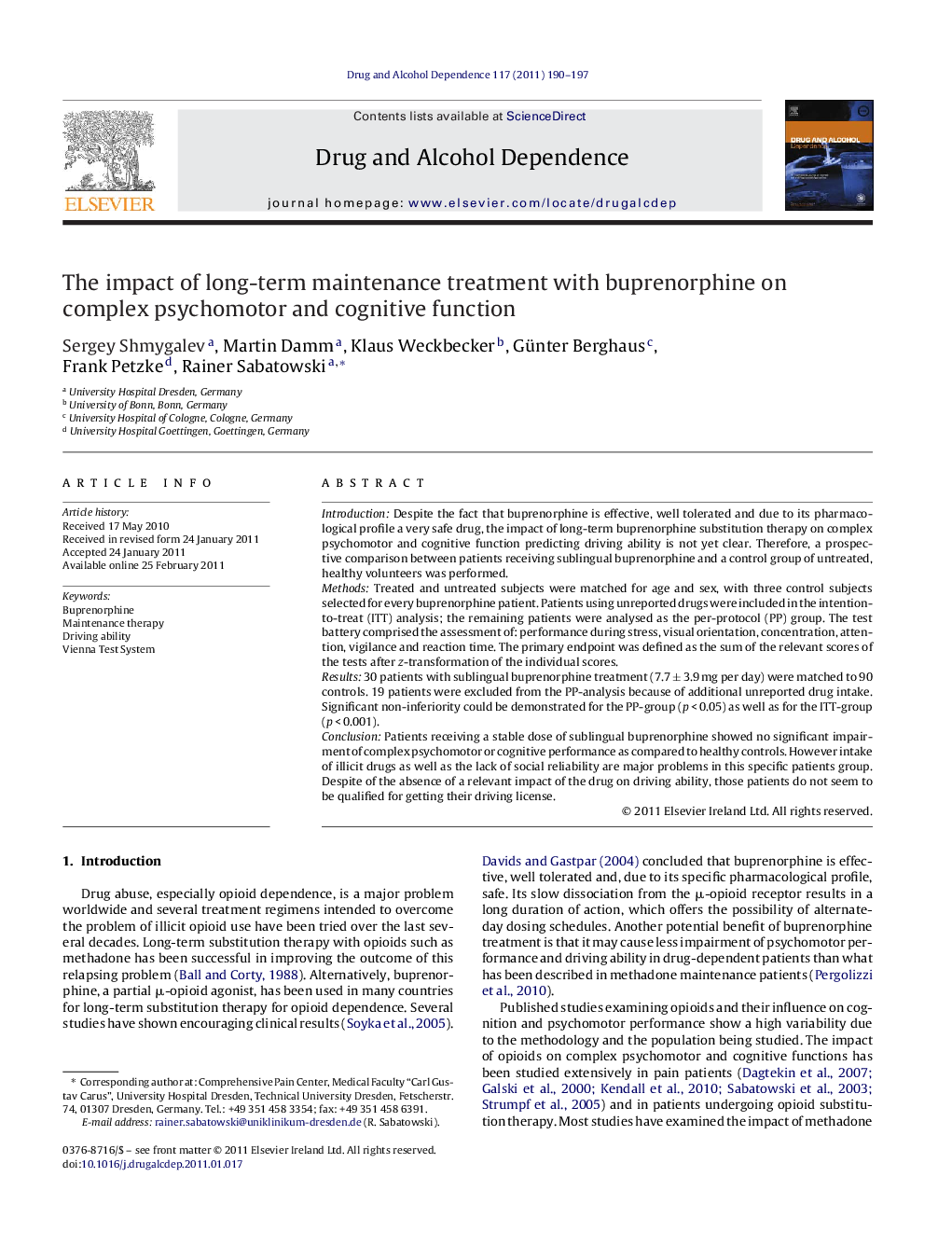| Article ID | Journal | Published Year | Pages | File Type |
|---|---|---|---|---|
| 1070323 | Drug and Alcohol Dependence | 2011 | 8 Pages |
IntroductionDespite the fact that buprenorphine is effective, well tolerated and due to its pharmacological profile a very safe drug, the impact of long-term buprenorphine substitution therapy on complex psychomotor and cognitive function predicting driving ability is not yet clear. Therefore, a prospective comparison between patients receiving sublingual buprenorphine and a control group of untreated, healthy volunteers was performed.MethodsTreated and untreated subjects were matched for age and sex, with three control subjects selected for every buprenorphine patient. Patients using unreported drugs were included in the intention-to-treat (ITT) analysis; the remaining patients were analysed as the per-protocol (PP) group. The test battery comprised the assessment of: performance during stress, visual orientation, concentration, attention, vigilance and reaction time. The primary endpoint was defined as the sum of the relevant scores of the tests after z-transformation of the individual scores.Results30 patients with sublingual buprenorphine treatment (7.7 ± 3.9 mg per day) were matched to 90 controls. 19 patients were excluded from the PP-analysis because of additional unreported drug intake. Significant non-inferiority could be demonstrated for the PP-group (p < 0.05) as well as for the ITT-group (p < 0.001).ConclusionPatients receiving a stable dose of sublingual buprenorphine showed no significant impairment of complex psychomotor or cognitive performance as compared to healthy controls. However intake of illicit drugs as well as the lack of social reliability are major problems in this specific patients group. Despite of the absence of a relevant impact of the drug on driving ability, those patients do not seem to be qualified for getting their driving license.
